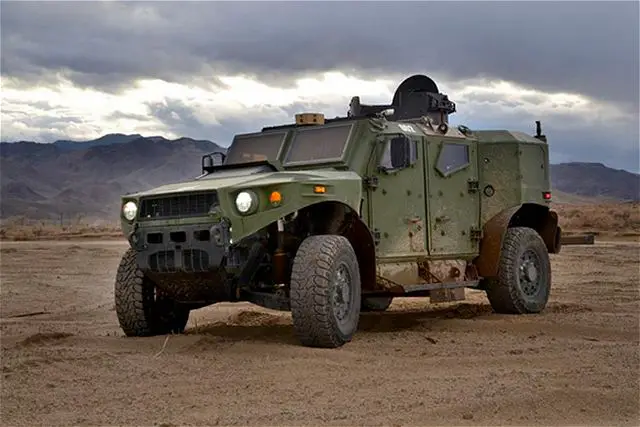| a |
| |
Defense Industry Technology - Ultra Light Vehicle
|
|
| |
|
| |
| Wednesday,
September 18, 2013, 11:17 AM |
| |
| U.S.
Army TACOM Tank Automotive Research tests Ultra Light Vehicle new military
vehicle concept |
|
A prototype military vehicle undergoing testing at the U.S. Army TACOM
complex in Warren could soon lead to a lighter, more fuel-efficient armored
truck for U.S. troops sent to the battlefield. The Ultra Light Vehicle,
or ULV, weighs 6,350 kg (14,000 pounds), about one-third of the weight
of similar military vehicles, yet will be capable of a top speed of 112
km/h (70 mph). |
|
 The U.S. Army’s
Ultra Light Vehicle Research Prototype aims to be safe, fuel-efficient
and versatile.
The U.S. Army’s
Ultra Light Vehicle Research Prototype aims to be safe, fuel-efficient
and versatile.
|
| |
While
no military strategist can predict with absolute certainty where future
conflicts will happen, Army researchers have designed the Ultra Light
Vehicle (ULV) Research Prototype to meet a wide range of challenges by
making it fuel efficient, versatile and survivable in nearly any environment.
The team produced three vehicles: two will be used for mobility, mine
blast and ballistic survivability testing and the third is moving into
TARDEC’s Ground Systems Power and Energy Laboratory (GSPEL) for
mobility and fuel efficiency testing. Results are expected to be available
in early 2014.
ULV’s final design was developed by lead contractor Hardwire LLC.
The relatively spacious crewaccommodating cab provides increased interior
space than similarly equipped tactical vehicles. Remote-mounted and remote-controlled
vehicle electronics reduce HVAC loads and create space. “Clamshell”
front and rear doors open away from the B-pillar creating a protected
area for Soldiers to exit.
“The cab is designed to have seven egress points facilitated by
quick-release and removable components, stowage space for personnel and
mission-specific items and 360-degree situational awareness through front-
and rear-mounted ultra wide-angle thermal imagers,” explained TARDEC
engineer Vladimir Gendlin.
The hybrid design allows for a “clean underbody” through the
elimination of various automotive components potentially allowing for
blast-mitigation technologies to perform uninhibited during a blast event.
This design provides added opportunities to integrate various blast-mitigating
kits under the hull for higher threat levels. Interior technologies include
a crushable floating floor system that decouples the crew’s feet
and legs from the steel hull and absorbs energy, adjustable stroking seats,
five-point restraint systems, and spatial accommodations to mitigate head
impacts and flail injuries.
ULV also utilizes highstrength steels and advanced composite materials
offering lightweight ballistic protection from a number of threats to
include a newly developed transparent ceramic armor system to keep the
vehicle’s overall weight down. |
| |















